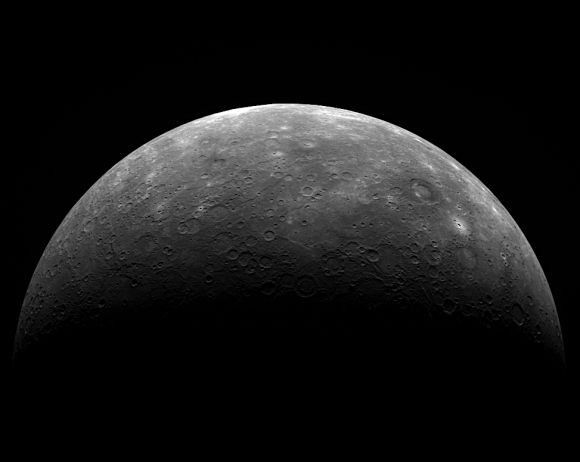| Online: | |
| Visits: | |
| Stories: |

| Story Views | |
| Now: | |
| Last Hour: | |
| Last 24 Hours: | |
| Total: | |
Mercury Shrinking: the First Rock from the Sun Contracted More than Once Thought

Image of Mercury from MESSENGER’s third flyby (NASA/Johns Hopkins University Applied Physics Laboratory/Carnegie Institution of Washington)
Whatever Mercury’s did to trim down its waistline has worked better than anyone thought — the innermost planet in our Solar System has reduced its radius* by about 7 kilometers (4.4 miles), over double the amount once estimated by scientists.
Of course you wouldn’t want to rush to begin the Mercury diet — its planetary contraction has taken place over the course of 3.8 billion years, since the end of the Late Heavy Bombardment. Still — lookin’ good, Mercury!
These findings come thanks to the MESSENGER spacecraft, in orbit around Mercury since 2011. Now that MESSENGER has successfully mapped literally all of Mercury’s surface, detailed measurements of more than 5,900 landforms created by cooling and contraction of the planet’s crust have allowed researchers to more precisely determine its geologic history and answer some decades-old questions raised by Mariner 10 images.
“This discrepancy between theory and observation, a major puzzle for four decades, has finally been resolved,” said MESSENGER Principal Investigator Sean Solomon. ”It is wonderfully affirming to see that our theoretical understanding is at last matched by geological evidence.”
(…)
Read the rest of Mercury Shrinking: the First Rock from the Sun Contracted More than Once Thought (249 words)
© Jason Major for Universe Today, 2014. |
Permalink |
No comment |
Post tags: contraction, Mercury, MESSENGER, planet, scarps, shrinking, Solar System, tectonics
Feed enhanced by Better Feed from Ozh
Source: http://www.universetoday.com/110364/mercury-shrinking-the-first-rock-from-the-sun-contracted-more-than-once-thought/



